Use this nursing care plan and management guide to help care for patients with burn injury. Learn about the nursing assessment, nursing interventions, goals and nursing diagnosis for patients with burns in this guide.
What is Burn Injury?
A burn injury is damage to your body’s tissues caused by heat, chemicals, electricity, sunlight, or radiation. Scalds from hot liquids and steam, building fires, and flammable liquids and gases are the most common causes of burns. A major burn is a catastrophic injury, requiring painful treatment and a long period of rehabilitation. It’s commonly fatal or permanently disfiguring and incapacitating (both emotionally and physically).
Classification of Burns
Burns are classified according to the depth and extent of the injury. Classifications of the depth of burns include first-degree (partial thickness), second-degree (superficial or deep partial thickness), and third-degree (full-thickness).
A first-degree burn indicates destruction of the epidermis resulting in localized pain and redness. Healing is complete and occurs within 5 to 10 days. A superficial second-degree burn indicates destruction of the epidermis and the upper third of the dermis; it is characterized by pain and blister formation. Healing is complete but requires extended time to occur. A deep second-degree burn indicates destruction of the epidermis and dermis, leaving only the epidermal skin appendages within the hair follicles. The skin may be waxy white in appearance and require grafting or prolonged periods of recovery. A third-degree burn indicated the destruction of the entire epidermis and dermis and typically involves fat and muscle; the skin may be white, charred, or leathery in appearance. This burn requires skin grafting and prolonged periods of recovery.
Phases of Burn Injury
Paying attention and caring for a patient with burns serve as an extraordinary demand to even the most experienced nursing staff because few injuries pose a greater threat to the patient’s physical and emotional well-being. There are three phases of burn injury, each requiring various levels of patient care. The three phases are the emergent phase, intermediate phase, and rehabilitative phase.
The emergent phase starts with the onset of burn injury and lasts until the completion of fluid resuscitation or a period of about the first 24 hours. During the emergent phase, the priority of patient care involves maintaining an adequate airway and treating the patient for burn shock.
The intermediate phase of burn care starts about 48–72 hours after the burn injury. Alterations in capillary permeability and a return of osmotic pressure bring about diuresis or increased urinary output. If renal and cardiac functions do not return to normal, the added fluid volume, which prevented hypovolemic shock, can now produce manifestations of congestive heart failure. Assessment of central venous pressure gives information regarding the patient’s fluid status.
The final stage in caring for a patient with a burn injury is the rehabilitative stage. This stage starts with the closure of the burn and ends when the patient has reached the optimal level of functioning. The focus is on helping the patient return to a normal injury-free life. Helping the patient adjust to the changes the injury has imposed is also a priority.
Nursing Care Plans and Management
The nursing care planning goals for a patient with a burn injury include pain management, infection prevention, wound care, nutritional support, psychological support, and promoting mobility and rehabilitation. The overall goal is to provide comprehensive care that addresses the patient’s physical, emotional, and psychological needs to promote healing, prevent complications, and promote recovery.
Nursing Problem Priorities
The following are the nursing priorities for patients with burn injury:
- Ensure and maintain a clear airway and adequate breathing.
- Administer appropriate fluid resuscitation to prevent dehydration and shock.
- Provide effective pain management.
- Implement infection control measures to prevent wound and systemic infections.
- Assess and manage burn wounds to promote healing.
- Provide necessary nutritional support to meet increased metabolic demands.
Nursing Assessment
Assess for the following subjective and objective data:
- Redness or discoloration of the skin at the burn site
- Pain or tenderness at the burn site
- Swelling or blister formation
- Peeling or shedding of skin
- Presence of open wounds or raw skin
- Charred or blackened skin in severe burns
- Difficulty breathing or coughing if the burn involves the airways
- Nausea or vomiting
- Weakness or dizziness
- Increased heart rate
- Decreased urine output
- Signs of infection, such as increased redness, swelling, or pus
- Changes in mental status or confusion
- Smoke inhalation-related symptoms, such as hoarseness, cough, or difficulty swallowing
Assess for factors related to the cause of burn injury:
- Neuromuscular impairment, pain/discomfort, decreased strength and endurance
- Restrictive therapies, limb immobilization; contractures
- Disruption of the skin surface with the destruction of skin layers (partial-/full-thickness burn) requiring grafting
- Traumatic event, dependent patient role; disfigurement, pain
- Tracheobronchial obstruction: mucosal edema and loss of ciliary action (smoke inhalation); circumferential full-thickness burns of the neck, thorax, and chest, with compression of the airway or limited chest excursion
- Trauma: direct upper-airway injury by flame, steam, hot air, and chemicals/gases
- Situational crises: hospitalization/isolation procedures, interpersonal transmission, and contagion, the memory of the trauma experience, threat of death and/or disfigurement
- Hypermetabolic state (can be as much as 50%–60% higher than normal proportional to the severity of injury)
- Protein catabolism
- Destruction of skin/tissues; edema formation
- Manipulation of injured tissues, e.g., wound debridement
- Inadequate primary defenses: the destruction of the skin barrier, traumatized tissues
- Inadequate secondary defenses: decreased Hb, suppressed inflammatory response
Nursing Diagnosis
Following a thorough assessment, a nursing diagnosis is formulated to specifically address the challenges associated with burn injury based on the nurse’s clinical judgement and understanding of the patient’s unique health condition. While nursing diagnoses serve as a framework for organizing care, their usefulness may vary in different clinical situations. In real-life clinical settings, it is important to note that the use of specific nursing diagnostic labels may not be as prominent or commonly utilized as other components of the care plan. It is ultimately the nurse’s clinical expertise and judgment that shape the care plan to meet the unique needs of each patient, prioritizing their health concerns and priorities.
Nursing Goals
Goals and expected outcomes may include:
- The client will maintain a position of function as evidenced by the absence of contractures.
- The client will maintain or increase the strength and function of the affected and/or compensatory body part.
- The client will demonstrate techniques/behaviors that enable the resumption of activities.
- The client will incorporate changes into self-concept without negating self-esteem.
- The client will talk with family/SO about the situation, and changes that have occurred.
- The client will develop realistic goals/plans for the future.
- The client will demonstrate clear breath sounds, respiratory rate within normal range, and be free of dyspnea/cyanosis.
- The client will verbalize awareness of feelings and healthy ways to deal with them.
- The client will report anxiety/fear reduced to a manageable level.
- The client will demonstrate problem-solving skills and effective use of resources.
- The client will demonstrate tissue regeneration.
- The client will achieve timely healing of burned areas.
- The client will demonstrate nutritional intake adequate to meet metabolic needs as evidenced by stable weight/muscle-mass measurements, positive nitrogen balance, and tissue regeneration.
- The client will report relief/control of pain.
- The client will display relaxed facial expressions/body posture.
- The client will participate in activities and sleep/rest appropriately.
- The client will achieve timely wound healing free of purulent exudate and be afebrile.
- The client will verbalize understanding of the condition, prognosis, and potential complications.
- The client will verbalize understanding of therapeutic needs.
- The client will correctly perform necessary procedures and explain reasons for actions.
Nursing Interventions and Actions
Therapeutic interventions and nursing actions for patients with burn injury may include:
1. Improving Physical Mobility
Patients with burn injuries may experience impairment in physical mobility due to a variety of factors including neuromuscular impairment, pain/discomfort, and decreased strength and endurance. In addition, restrictive therapies, limb immobilization, and contractures can further contribute to impaired physical mobility by limiting the range of motion and causing muscle atrophy. All of these factors can make it difficult for patients to perform daily activities and participate in rehabilitation programs, which can delay recovery and increase the risk of long-term complications.
Note circulation, motion, and sensation of digits frequently.
It is crucial to note the circulation, motion, and sensation of digits frequently in patients with burns. Edema, a common occurrence in burn injuries, can compromise circulation to the extremities and potentially lead to tissue necrosis and contractures. Assessing the circulation, motion, and sensation of digits regularly can help detect early signs of compromised circulation and prevent long-term complications such as the loss of digits or limbs. It is essential to include assessment of the digits in the nursing care plan for burn patients to ensure prompt and appropriate interventions are in place.
Maintain proper body alignment with supports or splints, especially for burns over joints.
Proper alignment with supports or splints is critical for burn patients, particularly over joints. This promotes functional positioning of the extremities and helps prevent contractures, which can cause permanent damage and impair daily activities. Regular monitoring and adjustment of interventions are essential for optimal outcomes.
Perform ROM exercises consistently, initially passive, then active.
Prevents progressively tightening scar tissue and contractures; enhances the maintenance of muscle and joint functioning and reduces loss of calcium from the bone.
Encourage patient participation in all activities as individually able.
Promotes independence, enhances self-esteem, and facilitates the recovery process.
Encourage family/SO support and assistance with ROM exercises.
Enables family/SO to be active in patient care and provides more consistent therapy.
Medicate for pain before activity or exercise.
Reduces muscle and tissue stiffness and tension, enabling the patient to be more active and facilitating participation.
Schedule treatments and care activities to provide periods of uninterrupted rest.
Increases patient’s strength and tolerance for activity.
Incorporate ADLs with physical therapy, hydrotherapy, and nursing care.
Combining activities produces improved results by enhancing the effects of each.
Initiate the rehabilitative phase on admission.
It is easier to enlist participation when the patient is aware of the possibilities that exist for recovery.
Incorporate ADLs with physical therapy, hydrotherapy, and nursing care.
Combining activities produces improved results by enhancing the effects of each.
2. Improving Body Image and Self-Esteem
Patients with burn injuries may experience negative self body image due to visible scarring, disfigurement, and functional impairments. These physical appearance changes can cause significant emotional distress, feelings of loss, and impact on self-esteem and confidence. Supportive care and counseling can help patients to come to terms with altered body image, manage their emotional reactions, and adapt to their new physical reality.
Assess the meaning of loss or change to the patient and SO, including future expectations and the impact of cultural or religious beliefs.
Traumatic episode results in sudden, unanticipated changes, creating feelings of grief over actual or perceived losses. This necessitates support to work through to optimal resolution.
Acknowledge and accept the expression of feelings of frustration, dependency, anger, grief, and hostility. Note withdrawn behavior and use of denial.
Acceptance of these feelings as a normal response to what has occurred facilitates resolution. It is not helpful or possible to push the patient before ready to deal with the situation. Denial may be prolonged and be an adaptive mechanism because the patient is not ready to cope with personal problems.
Set limits on maladaptive behavior. Maintain a nonjudgmental attitude while giving care, and help the patient identify positive behaviors that will aid in recovery.
Patients and SO tend to deal with this crisis in the same way in which they have dealt with problems in the past. Staff may find it difficult and frustrating to handle behavior that is disruptive and not helpful to recuperation but should realize that the behavior is usually directed toward the situation and not the caregiver.
Be realistic and positive during treatments, in health teaching, and in setting goals within limitations.
Enhances trust and rapport between patient and nurse.
Encourage the patient and SO to view wounds and assist with care as appropriate.
Promotes acceptance of the reality of injury and of change in body and image of self as different.
Provide hope within the parameters of the individual situation; do not give false reassurance.
Promotes a positive attitude and provides an opportunity to set goals and plan for the future based on reality.
Assist the patient to identify the extent of actual change in appearance and body function.
Helps begin the process of looking to the future and how life will be different.
Give positive reinforcement of progress and encourage endeavors toward the attainment of rehabilitation goals.
Words of encouragement can support the development of positive coping behaviors.
Show pictures or videos of burn care and/or other patient outcomes, being selective in what is shown as appropriate to the individual situation. Encourage discussion of feelings about what the patient has seen.
Allows patients and SO to be realistic in expectations. Also assists in the demonstration of the importance of and/or necessity for certain devices and procedures.
Encourage family interaction with each other and with the rehabilitation team.
To opens lines of communication and provides ongoing support for patient and family.
Provide a support group for SO. Give information about how SO can be helpful to patients.
Promotes ventilation of feelings and allows for more helpful responses to patients.
Role-play social situations of concern to the patient.
Prepares patient and SO for reactions of others and anticipates ways to deal with them.
Provide thorough teaching and complete aftercare instructions for the patient. Stress the importance of keeping the dressing dry and clean.
Reinforcing teaching can help patients achieve self-care.
Refer to physical and occupational therapy, vocational counselor, psychiatric counseling, clinical specialist psychiatric nurse, social services, and psychologist, as needed.
Helpful in identifying ways/devices to regain and maintain independence. The patient may need further assistance to resolve persistent emotional problems.
Provide referral to a reconstructive surgeon for the patient disfigured by burns.
Reconstructive surgery can help patients gain self-esteem and confidence.
3. Improving Airway Clearance
Assess the patient’s airway, breathing, and circulation. Be especially alert for signs of smoke inhalation, and pulmonary damage: singed nasal hairs, mucosal burns, voice changes, coughing, wheezing, soot in the mouth or nose, and darkened sputum.
Exposure to materials burn can cause inhalation injury.
Obtain a history of injury. Note the presence of preexisting respiratory conditions, and a history of smoking.
Causative burning agents, duration of exposure, and occurrence in closed or open spaces predict the probability of inhalation injury. The type of material burned (wood, plastic, wool, and so forth) suggests the type of toxic gas exposure. Preexisting conditions increase the risk of respiratory complications.
Assess gag and swallow reflexes; note drooling, inability to swallow, hoarseness, and wheezy cough.
Suggestive of inhalation injury.
Monitor respiratory rate, rhythm, and depth: note the presence of pallor or cyanosis and carbonaceous or pink-tinged sputum.
Tachypnea, use of accessory muscles, presence of cyanosis, and changes in sputum suggest developing respiratory distress or pulmonary edema and the need for medical intervention.
Auscultate lungs, noting stridor, wheezing or crackles, diminished breath sounds, and brassy cough.
Airway obstruction and/or respiratory distress can occur very quickly or may be delayed, e.g., up to 48 hr after the burn.
Note the presence of pallor or cherry-red color of unburned skin.
Suggests the presence of hypoxemia or carbon monoxide.
Investigate changes in behavior or mentation: restlessness, agitation, and altered LOC.
Although often related to pain, changes in consciousness may reflect developing or worsening hypoxia.
Monitor 24-hr fluid balance, noting variations/changes.
Fluid shifts or excess fluid replacement increases the risk of pulmonary edema. Note: Inhalation injury increases fluid demands by as much as 35% or more because of obligatory edema.
Draw blood samples for complete blood count, type and crossmatch, electrolyte glucose, blood urea nitrogen, creatinine, and ABG levels.
To have baseline data and may indicate the choice of next steps of treatment.
Monitor and graph serial ABGs or pulse oximetry.
See Laboratory and Diagnostic Procedures
Review serial chest x-rays.
See Laboratory and Diagnostic Procedures
Elevate the head of the bed. Avoid the use of a pillow under the head, as indicated.
Promotes optimal lung expansion or respiratory function. When head or neck burns are present, a pillow can inhibit respiration, cause necrosis of burned ear cartilage, and promote neck contractures.
Encourage coughing or deep breathing exercises and frequent position changes.
Promotes lung expansion, mobilization, and drainage of secretions.
Suction (if necessary) with extreme care, maintaining a sterile technique.
Helps maintain a clear airway, but should be done cautiously because of mucosal edema and inflammation. The sterile technique reduces the risk of infection.
Promote voice rest, but assess the ability to speak and/or swallow oral secretions periodically.
Increasing hoarseness or decreased ability to swallow suggests increasing tracheal edema and may indicate the need for prompt intubation.
Administer humidified oxygen via the appropriate mode (face mask).
O2 corrects hypoxemia and acidosis. Humidity decreases the drying of the respiratory tract and reduces the viscosity of sputum.
Provide and assist with chest physiotherapy and incentive spirometry.
Chest physiotherapy drains dependent areas of the lung, and incentive spirometry may be done to improve lung expansion, thereby promoting respiratory function and reducing atelectasis.
Prepare and assist with intubation or tracheostomy, as indicated
Intubation or mechanical support is required when airway edema or circumferential burn injury interferes with respiratory function or oxygenation.
4. Minimizing Fear and Anxiety
Assess mental status, including mood and affect, comprehension of events, and content of thoughts.
Initially, patients may use denial and repression to reduce and filter information that might be overwhelming. Some patients display a calm manner and alert mental status, representing a dissociation from reality, which is also a protective mechanism.
Investigate changes in mentation and the presence of hypervigilance, hallucinations, sleep disturbances, nightmares, agitation, apathy, disorientation, and labile affect, all of which may vary from moment to moment.
Indicators of extreme anxiety and delirium state in which the patient is literally fighting for life. Although cause can be psychologically based, pathological life-threatening causes must be ruled out.
Identify previous methods of coping and handling stressful situations.
Past successful behavior can be used to assist in dealing with the present situation.
Give frequent explanations and information about care procedures. Repeat information as needed.
Knowing what to expect usually reduces fear and anxiety, clarifies misconceptions, and promotes cooperation. Because of the shock of the initial trauma, many people do not recall the information provided during that time.
Demonstrate a willingness to listen and talk to patients when free of painful procedures.
Helps the patient and SO know that support is available and that the healthcare provider is interested in the person, not just caring about the burn.
Involve the patient and the SO in the decision-making process whenever possible. Provide time for questioning and repetition of proposed treatments.
Promotes a sense of control and cooperation, decreasing feelings of helplessness or hopelessness.
Provide constant and consistent orientation.
Helps the patient stay in touch with the surroundings and reality.
Encourage the patient to talk about the burn circumstances when ready.
Patients may need to tell the story of what happened over and over to make some sense of a terrifying situation. Adjustment to the impact of the trauma, grief over losses, and disfigurement can easily lead to clinical depression, psychosis, and post-traumatic stress disorder (PTSD).
Explain to the patient what happened. Provide opportunities for questions and give honest answers.
Compassionate statements reflecting the reality of the situation can help the patient and SO acknowledge that reality and begin to deal with what has happened.
Create a restful environment, and use guided imagery and relaxation exercises.
Patients experience severe anxiety associated with burn trauma and treatment. These interventions are soothing and helpful for positive outcomes.
Assist the family to express their feelings of grief and guilt.
The family may initially be most concerned about the patient’s death and/or feel guilty, believing that in some way they could have prevented the incident.
Be empathic and nonjudgmental in dealing with patients and families.
Family relationships are disrupted; financial, lifestyle, or role changes make this a difficult time for those involved with patients, and they may react in many different ways.
Encourage family/SO to visit and discuss family happenings. Remind the patient of past and future events.
Maintains contact with a familiar reality, creating a sense of attachment and continuity of life.
Involve the entire burn team in care from admission to discharge, including social workers and psychiatric resources.
Provides a wider support system and promotes continuity of care and coordination of activities.
5. Providing Wound Care and Improving Skin Integrity
Patients with burn injuries may experience a a break in skin integrity due to the loss of skin, which can result in infection, impaired wound healing, and delayed recovery. The damaged skin also increases the risk of fluid and electrolyte imbalances, which can further exacerbate the patient’s condition. In addition, the loss of skin and other tissues, can result in decreased blood flow to the affected area. This can lead to impaired wound healing, tissue necrosis, and other complications.
Assess and document the size, color, and depth of the wound, noting necrotic tissue and the condition of the surrounding skin.
Provides baseline information about the need for skin grafting and possible clues about circulation in the area to support graft.
Evaluate the color of grafted and donor site(s); note the presence or absence of healing.
Evaluates the effectiveness of circulation and identify developing complications.
Provide appropriate burn care and infection control measures.
Prepares tissues for grafting and reduces the risk of infection/graft failure.
Maintain wound covering as indicated.
See Pharmacologic Management
Elevate grafted area if possible. Maintain desired position and immobility of area when indicated.
Movement of tissue under graft can dislodge it, interfering with optimal healing.
Maintain dressings over newly grafted area and/or donor site as indicated: mesh, petroleum, nonadhesive.
Areas may be covered by translucent, nonreactive surface material (between the graft and outer dressing) to eliminate shearing of new epithelium and protect healing tissue. The donor site is usually covered for 4–24 hr, then bulky dressings are removed and fine mesh gauze is left in place.
Keep skin free from pressure
Promotes circulation and prevents ischemia or necrosis and graft failure.
Wash sites with mild soap, rinse, and lubricate with cream several times daily after dressings are removed and healing is accomplished.
Newly grafted skin and healed donor sites require special care to maintain flexibility.
Aspirate blebs under sheet grafts with a sterile needle or roll with a sterile swab.
Fluid-filled blebs prevent graft adherence to underlying tissue, increasing the risk of graft failure.
Prepare for/assist with surgical grafting or biological dressings:
- Homograft (allograft)
Skin grafts obtained from living persons or cadavers are used as a temporary covering for extensive burns until the patient’s own skin is ready for grafting (test graft), to cover excised wounds immediately after escharotomy, or to protect granulation tissue.
- Heterograft (xenograft, porcine)
Skin grafts may be carried out with animal skin for the same purposes as homografts or to cover meshed autografts.
- Cultured epithelial autograft (CEA)
Skin graft obtained from uninjured part of patient’s own skin and prepared in a laboratory; may be full-thickness or partial-thickness. Note: This process takes 20–30 days from harvest to application. The new CEA sheets are 1–6 cell layers thick and thus are very fragile.
- Artificial skin (Integra)
The wound covering is approved by the Food and Drug Administration (FDA) for full-thickness and deep partial-thickness burns. It provides a permanent, immediate covering that reproduces the skin’s normal functions and stimulates the regeneration of dermal tissue.
6. Maintaining Adequate Nutrition
Patients with burn injuries may experience malnutrition due to the increased metabolic demands associated with the injury, as well as the physical and emotional stress of the injury. The body requires more calories and nutrients to promote healing and repair damaged tissue, which can lead to malnutrition if not adequately addressed. Additionally, patients may experience decreased appetite, nausea, and difficulty swallowing, further complicating their nutritional status.
Auscultate bowel sounds. Note hypoactive or absent bowel sounds.
Ileus is often associated with a postburn period but usually subsides within 36–48 hr, at which time oral feedings can be initiated.
Ascertain food likes and dislikes. Encourage SO to bring food from home, as appropriate.
Provides patient or SO a sense of control; enhances participation in care and may improve intake.
Monitor muscle mass and subcutaneous fat as indicated.
Indirect calorimetry, if available, may be useful in more accurately estimating body reserves or losses and the effectiveness of therapy.
Maintain a strict calorie count. Weigh daily. Reassess the percentage of open body surface area and wounds weekly.
Appropriate guides to proper caloric intake include 25 kcal/kg body weight, plus 40 kcal per percentage of TBSA burn in the adult. As the burn wound heals, the percentage of burned areas is reevaluated to calculate prescribed dietary formulas, and appropriate adjustments are made.
Monitor laboratory studies: serum albumin, prealbumin, Cr, transferrin, and urine urea nitrogen.
See Laboratory and Diagnostic Procedures
Perform fingerstick glucose, and urine testing as indicated.
See Laboratory and Diagnostic Procedures
Provide small, frequent meals and snacks.
Helps prevent gastric distension or discomfort and may enhance intake.
Encourage the patient to view diet as a treatment and to make food or beverage choices high in calories and protein.
Calories and proteins are needed to maintain weight, meet metabolic needs, and promote wound healing.
Encourage the patient to sit up for meals and visit with others.
Sitting helps prevent aspiration and aids in the proper digestion of food. Socialization promotes relaxation and may enhance intake.
Provide oral hygiene before meals.
A clean mouth and clean palate enhance taste and help promote a good appetite.
Insert nasogastric tube, as indicated.
To decompress the stomach and avoid aspiration of stomach contents.
Provide a diet high in calories or protein with trace elements and vitamin supplements.
Calories (3000–5000 per day), proteins, and vitamins are needed to meet increased metabolic needs, maintain weight, and encourage tissue regeneration. Note: The oral route is preferable once GI function returns.
Insert and maintain a small feeding tube for enteral feedings and supplements if needed.
Provides continuous supplemental feedings when the patient is unable to consume total daily calorie requirements orally. Note: Continuous tube feeding during the night increases calorie intake without decreasing appetite and oral intake during the day.
Administer parenteral nutrition solutions containing vitamins and minerals, as indicated.
Total parenteral nutrition (TPN) maintains nutritional intake and meets metabolic needs in presence of severe complications or sustained esophageal or gastric injuries that do not permit enteral feedings.
Administer insulin as indicated.
Elevated serum glucose levels may develop because of stress response to injury, high caloric intake, pancreatic fatigue.
Refer to a dietitian or nutrition support team.
Useful in establishing individual nutritional needs (based on weight and body surface area of injury) and identifying appropriate routes.
Assess color, sensation, movement, peripheral pulses, and capillary refill on extremities with circumferential burns. Compare with findings of unaffected limb.
Edema formation can readily compress blood vessels, thereby impeding circulation and increasing venous stasis or edema. Comparisons with unaffected limbs aid in differentiating localized versus systemic problems (hypovolemia or decreased cardiac output).
Obtain BP in unburned extremities when possible. Remove the BP cuff after each reading, as indicated.
If BP readings must be obtained on an injured extremity, leaving the cuff in place may increase edema formation and reduce perfusion, and convert partial thickness burn to a more serious injury.
Check for irregular pulses
Cardiac dysrhythmias can occur as a result of electrolyte shifts, electrical injury, or release of myocardial depressant factor, compromising cardiac output.
Investigate reports of deep or throbbing ache and numbness.
Indicators of decreased perfusion and/or increased pressure within enclosed space, such as may occur with a circumferential burn of an extremity (compartment syndrome).
Monitor electrolytes, especially sodium, potassium, and calcium. Administer replacement therapy as indicated.
Losses or shifts of these electrolytes affect cellular membrane potential and excitability, thereby altering myocardial conductivity, potentiating the risk of dysrhythmias, and reducing cardiac output and tissue perfusion.
Measure intracompartmental pressures as indicated.
Ischemic myositis may develop because of decreased perfusion.
Elevate affected extremities, as appropriate. Remove jewelry or arm bands Avoid taping around a burned area.
Promotes systemic circulation and venous return that may reduce edema or other deleterious effects of constriction of edematous tissues. Prolonged elevation can impair arterial perfusion if blood pressure (BP) falls or tissue pressures rise excessively.
Encourage active ROM exercises of unaffected body parts.
Promotes local and systemic circulation.
Maintain fluid replacement per protocol.
Maximizes circulating volume and tissue perfusion.
Avoid the use of IM/SC injections.
Altered tissue perfusion and edema formation impair drug absorption. Injections into potential donor sites may render them unusable because of hematoma formation.
Assist and prepare for escharotomy or fasciotomy, as indicated.
Enhances circulation by relieving constriction caused by rigid, nonviable tissue (eschar) or edema formation.
7. Minimizing Pain and Providing Comfort
Patients with burn injuries may experience acute pain due to the destruction of skin and tissues, which exposes nerve endings and increases sensitivity to pain. Additionally, edema formation and manipulation of injured tissues during wound care can further exacerbate pain. Effective pain management is critical in promoting patient comfort and preventing complications such as anxiety, depression, and delayed wound healing.
Assess reports of pain, noting location and character, and intensity (0–10 scale).
Pain is nearly always present to some degree because of varying severity of tissue involvement and destruction but is usually most severe during dressing changes and debridement. Changes in location, character, and intensity of pain may indicate developing complications (limb ischemia) or herald improvement and/or return of nerve function and sensation.
Cover wounds as soon as possible unless an open-air exposure burn care method is required.
Temperature changes and air movement can cause great pain to exposed nerve endings.
Elevate burned extremities periodically.
Elevation may be required initially to reduce edema formation; thereafter, changes in position and elevation reduce discomfort and the risk of joint contractures.
Provide bed cradle as indicated.
Elevation of linens off wounds may help reduce pain.
Wrap digits or extremities in the position of function (avoiding the flexed position of affected joints) using splints and footboards as necessary.
Position of function reduces deformities or contractures and promotes comfort. Although the flexed position of injured joints may feel more comfortable, it can lead to flexion contractures.
Change position frequently and assist with active and passive ROM as indicated.
Movement and exercise reduce joint stiffness and muscle fatigue, but the type of exercise depends on the location and extent of the injury.
Maintain comfortable environmental temperature, provide heat lamps, and heat-retaining body coverings.
Temperature regulation may be lost with major burns. External heat sources may be necessary to prevent chilling.
Provide medication and/or place in hydrotherapy (as appropriate) before performing dressing changes and debridement.
Reduces severe physical and emotional distress associated with dressing changes and debridement.
Encourage the expression of feelings about pain.
Verbalization allows an outlet for emotions and may enhance coping mechanisms.
Involve the patient in determining the schedule for activities, treatments, and drug administration.
Enhances the patient’s sense of control and strengthens coping mechanisms.
Explain procedures and provide frequent information as appropriate, especially during wound debridement.
Empathic support can help alleviate pain and/or promote relaxation. Knowing what to expect provides an opportunity for the patient to prepare self and enhances a sense of control.
Provide basic comfort measures: massage of uninjured areas and frequent position changes.
Promotes relaxation; reduces muscle tension and general fatigue.
Encourage the use of stress management techniques: progressive relaxation, deep breathing, guided imagery, and visualization.
Refocuses attention, promotes relaxation, and enhances a sense of control, which may reduce pharmacological dependency.
Provide diversional activities appropriate for age and condition.
Helps lessen concentration on the pain experience and refocus attention.
Promote uninterrupted sleep periods.
Sleep deprivation can increase the perception of pain/reduce coping abilities.
Administer analgesics (narcotic and non-narcotic) as indicated: morphine; fentanyl (Sublimaze, Ultiva); hydrocodone (Vicodin, Hycodan); oxycodone(OxyContin, Percocet).
The burned patient may require around-the-clock medication and dose titration. IV method is often used initially to maximize drug effect. Concerns of patient addiction or doubts regarding the degree of pain experienced are not valid during the emergent/acute phase of care, but narcotics should be decreased as soon as feasible and alternative methods for pain relief initiated.
8. Preventing Infection
Patients with burn injuries are at risk for infection due to the loss of their skin barrier, which normally protects the body from pathogens. Additionally, the tissues surrounding the burn site are traumatized, there is a decrease in hemoglobin levels, and the inflammatory response is suppressed, making it easier for pathogens to infect the body. Environmental exposure and invasive procedures can also increase the risk of infection.
Examine wounds daily, and note and document changes in appearance, odor, or quantity of drainage.
Indicators of sepsis (often occurs with full-thickness burn) requiring prompt evaluation and intervention. Note: Changes in sensorium, bowel habits, and the respiratory rate usually precede fever and alteration of laboratory studies.
Examine unburned areas (such as the groin, neck creases, and mucous membranes) and vaginal discharge routinely.
Eyes may be swollen shut and/or become infected by drainage from surrounding burns. If lids are burned, eye covers may be needed to prevent corneal damage.
Monitor vital signs for fever, increased respiratory rate, and depth in association with changes in sensorium, presence of diarrhea, decreased platelet count, and hyperglycemia with glycosuria.
Water softens and aids in the removal of dressings and eschar (slough layer of dead skin or tissue). Sources vary as to whether a bath or shower is best. Bath has the advantage of water providing support for exercising extremities but may promote cross-contamination of wounds. Showering enhances wound inspection and prevents contamination from floating debris.
Photograph the wound initially and at periodic intervals.
Provides baseline and documentation of the healing process.
Obtain routine cultures and sensitivities of wounds and/or drainage.
Allows early recognition and specific treatment of wound infection.
Implement appropriate isolation techniques as indicated.
Dependent on the type or extent of wounds and the choice of wound treatment (open versus closed), isolation may range from simple wound and/or skin to complete or reverse to reduce the risk of cross-contamination and exposure to multiple bacterial flora.
Emphasize and model good handwashing techniques for all individuals coming in contact with patient.
Prevents cross contamination; reduces the risk of acquired infection.
Use gowns, gloves, masks, and strict aseptic technique during direct wound care and provide sterile or freshly laundered bed linens or gowns.
Prevents exposure to infectious organisms.
Monitor and/or limit visitors, if necessary. If isolation is used, explain the procedure to visitors. Supervise visitor adherence to the protocol as indicated.
Prevents cross-contamination from visitors. Concern for the risk of infection should be balanced against the patient’s need for family support and socialization.
Shave or clip all hair from around burned areas to include a 1-in border (excluding eyebrows). Shave facial hair (men) and shampoo head daily.
Opportunistic infections (yeast) frequently occur because of depression of the immune system and/or the proliferation of normal body flora during systemic antibiotic therapy.
Provide special care for eyes: use eye covers and tear formulas as appropriate.
Prevents adherence to surface it may be touching and encourages proper healing. Note: Ear cartilage has limited circulation and is prone to pressure necrosis.
Prevent skin-to-skin surface contact (wrap each burned finger or toe separately; do not allow the burned ear to touch the scalp).
Identifies the presence of healing (granulation tissue) and provides for early detection of burn-wound infection. Infection in a partial-thickness burn may cause conversion of burn to full-thickness injury. Note: A strong sweet, musty smell at a graft site is indicative of Pseudomonas.
Remove dressings and cleanse burned areas in a hydrotherapy or whirlpool tub or in a shower stall with a handheld shower head. Maintain the temperature of water at 100°F (37.8°C). Wash areas with a mild cleansing agent or surgical soap.
Early excision is known to reduce scarring and the risk of infection, thereby facilitating healing.
Debride necrotic or loose tissue (including ruptured blisters) with scissors and forceps. Do not disturb intact blisters if they are smaller than 1–2 cm, do not interfere with joint function, and do not appear infected.
Promotes healing. Prevents autocontamination. Small, intact blisters help protect the skin and increase the rate of re-epithelialization unless the burn injury is the result of chemicals (in which case fluid contained in blisters may continue to cause tissue destruction).
Administer topical agents as indicated.
See Pharmacologic Management
Administer other medications as appropriate: Subeschar clysis or systemic antibiotics; Tetanus toxoid or clostridial antitoxin, as appropriate.
Tissue destruction and altered defense mechanisms increase the risk of developing tetanus or gas gangrene, especially in deep burns such as those caused by electricity. See Pharmacologic Management
Place IV and/or invasive lines in the non-burned areas.
Decreased risk of infection at the insertion site with the possibility of progression to septicemia.
9. Initiating Patient Education and Health Teachings
Patients with burn injuries may have questions about their condition and treatment due to various reasons such as lack of prior exposure to burn injuries, the overwhelming nature of the injury, and complex medical terminologies. This can hinder the patient’s ability to make informed decisions about their care, adhere to treatment plans, and take appropriate measures to prevent complications.
Review condition, prognosis, and future expectations.
Provides a knowledge base from which patients can make informed choices.
Discuss the patient’s expectations of returning home, to work, and to normal activities.
The patient frequently has a difficult and prolonged adjustment after discharge. Problems often occur (sleep disturbances, nightmares, reliving the accident, difficulty with the resumption of social interactions, intimacy, and sexual activity, emotional lability) that interfere with successful adjustment to resuming normal life.
Review medications, including purpose, dosage, route, and expected and/or reportable side effects.
Reiteration allows the opportunity for the patient to ask questions and be sure understanding is accurate.
Identify signs and symptoms requiring medical evaluation: inflammation, increase or changes in wound drainage, fever/chills; changes in pain characteristics, or loss of mobility and/or function.
Early detection of developing complications (infection, delayed healing) may prevent progression to more serious or life-threatening situations.
Discuss skin care. Teach proper use of moisturizers, sunscreens, and anti-itching medications.
Itching, blistering, and sensitivity of healing wounds or graft sites can be expected for an extended time, and injury can occur because of the fragility of the new tissue.
Review and have the patient/SO demonstrate proper burn, skin graft, and wound care techniques. Identify appropriate sources for outpatient care and supplies.
Promotes competent self-care after discharge, enhancing independence.
Explain the scarring process and the necessity for and proper use of pressure garments when used.
Promotes optimal regrowth of skin, minimizing the development of hypertrophic scarring and contractures and facilitating the healing process. Note: Consistent use of the pressure garment over a long period can reduce the need for reconstructive surgery to release contractures and remove scars.
Encourage continuation of the prescribed exercise program and scheduled rest periods.
Maintains mobility, reduces complications, and prevents fatigue, facilitating the recovery process.
Identify specific limitations of activity as individually appropriate.
Imposed restrictions depend on the severity and location of injury and stage of healing.
Emphasize the importance of sustained intake of high-protein and high-calorie meals and snacks.
Optimal nutrition enhances tissue regeneration and a general feeling of well-being. Note: The patient often needs to increase caloric intake to meet calorie and protein needs for healing.
Advise patient and/or SO of potential for exhaustion, boredom, emotional lability, and adjustment problems. Provide information about the possibility of discussion with appropriate professional counselors.
Provides perspective to some of the problems patient and/or SO may encounter, and aids awareness that assistance is available when necessary.
Stress the importance of follow-up care and rehabilitation.
Long-term support with continual reevaluation and changes in therapy is required to achieve optimal recovery.
Provide the phone number of a contact person.
Provides easy access to the treatment team to reinforce teaching, clarify misconceptions, and reduce the potential for complications.
Ensure patient’s immunizations are current, especially tetanus.
To prevent further injury.
Identify community resources: skin or wound care professionals, crisis centers, recovery groups, mental health, Red Cross, visiting nurses, Amblicab, and homemaker service.
Facilitates transition to home, provides assistance with meeting individual needs and supports independence.
10. Managing Fluid Volume
The inflammatory response caused by the burn injury can increase capillary permeability and cause fluid to leak into the surrounding tissues, further exacerbating the risk of fluid volume deficit.
Monitor vital signs, and central venous pressure (CVP). Note capillary refill and strength of peripheral pulses.
Serves as a guide to fluid replacement needs and assesses cardiovascular response. Note: Invasive monitoring is indicated for patients with major burns, smoke inhalation, or preexisting cardiac disease, although there is an associated increased risk of infection, necessitating careful monitoring and care of the insertion site.
Monitor urinary output and specific gravity. Observe urine color and Hematest as indicated.
Generally, fluid replacement should be titrated to ensure average urinary output of 30–50 mL/hr (in the adult). Urine can appear red to black (with massive muscle destruction) because of the presence of blood and the release of myoglobin. If gross myoglobinuria is present, the minimum urinary output should be 75–100 mL/hr to reduce the risk of tubular damage and renal failure.
Estimate wound drainage and insensible losses.
Increased capillary permeability, protein shifts, inflammatory process, and evaporative losses greatly affect circulating volume and urinary output, especially during the initial 24–72 hr after burn injury.
Weigh daily.
Fluid replacement formulas partly depend on admission weight and subsequent changes. A 15%–20% weight gain can be anticipated in the first 72 hr during fluid replacement, with a return to pre-burn weight approximately 10 days after the burn.
Evaluate changes in mentation.
Deterioration in the level of consciousness may indicate inadequate circulating volume and reduced cerebral perfusion.
Measure the circumference of burned extremities as indicated.
May be helpful in estimating the extent of edema and fluid shifts affecting circulating volume and urinary output.
Observe for gastric distension, hematemesis, and tarry stools. Hematest nasogastric (NG) drainage and stools periodically.
Stress (Curling’s) ulcer occurs in up to half of all severely burned patients and can occur as early as the first week. Patients with burns more than 20% TBSA is at risk for mucosal bleeding in the gastrointestinal (GI) tract during the acute phase because of decreased splanchnic blood flow and reflex paralytic ileus.
Monitor laboratory studies: Hb/Hct, electrolytes, random urine sodium.
See Laboratory and Diagnostic Procedures
Maintain a cumulative record of the amount and types of fluid intake.
Massive or rapid replacement with different types of fluids and fluctuations in the rate of administration require close tabulation to prevent constituent imbalances or fluid overload.
Insert and maintain an indwelling urinary catheter.
Allows for close observation of renal function and prevents urinary retention. Retention of urine with its by-products of tissue-cell destruction can lead to renal dysfunction and infection.
Insert and maintain large-bore IV catheter(s).
Accommodates rapid infusion of fluids.
Administer calculated IV replacement of fluids, electrolytes, plasma, and albumin.
Fluid resuscitation replaces lost fluids and electrolytes and helps prevent complications (shock, acute tubular necrosis). Replacement formulas vary but are based on the extent of injury, amount of urinary output, and weight. Note: Once initial fluid resuscitation has been accomplished, a steady rate of fluid administration is preferred to boluses, which may increase interstitial fluid shifts and cardiopulmonary congestion.
Administer diuretics, potassium, antacids, and histamine inhibitors as indicated.
See Pharmacologic Management
Add electrolytes to water used for wound debridement, as indicated.
Washing a solution that approximates tissue fluids may minimize osmotic fluid shifts.
11. Administer Medications and Provide Pharmacologic Support
Medications involved in burn injury management may include analgesics such as opioids or nonsteroidal anti-inflammatory drugs (NSAIDs) to alleviate pain, antibiotics to prevent or treat infections, topical agents like antimicrobial creams or ointments to promote wound healing and prevent infection, and tetanus toxoid or clostridial antitoxin may be given to prevent tetanus infection in cases of significant burn injuries.
Wound Covering
- Biosynthetic dressing (Biobrane)
Nylon fabric and/or silicon membrane containing collagenous porcine peptides that adhere to wound surface until removed or sloughed off by spontaneous skin re-epithelialization. Useful for eschar-free partial-thickness burns awaiting autografts because it can remain in place for 2–3 wk or longer and is permeable to topical antimicrobial agents.
- Synthetic dressings: DuoDerm
Hydroactive dressing that adheres to the skin to cover small partial-thickness burns and that interacts with wound exudate to form a soft gel that facilitates debridement.
- Opsite, Acuderm
Thin, transparent, elastic, waterproof, occlusive dressing (permeable to moisture and air) that is used to cover clean partial-thickness wounds and clean donor sites; Reduces swelling/limits risk of graft separation.
Insulin
Insulin may be administered for burn injury patients due to the increased stress response and metabolic changes that occur following burns, which can lead to insulin resistance and hyperglycemia. Insulin helps regulate blood glucose levels, promotes wound healing, and reduces the risk of complications such as infection and delayed healing in burn patients.
Topical Agents
- Silver sulfadiazine (Silvadene)
Broad-spectrum antimicrobial that is relatively painless but has intermediate, somewhat delayed eschar penetration. May cause rash or depression of WBCs. - Mafenide acetate (Sulfamylon)
Antibiotic of choice with confirmed invasive burn-wound infection. Useful against Gram-negative or Gram-positive organisms. Causes burning or pain on application and for 30 min thereafter. Can cause rash, metabolic acidosis, and decreased Paco2. - Silver nitrate
Effective against Staphylococcus aureus, Escherichia coli, and Pseudomonas aeruginosa, but has poor eschar penetration, is painful, and may cause electrolyte imbalance. Dressings must be constantly saturated. Product stains skin/surfaces black. - Bacitracin
Effective against Gram-positive organisms and is generally used for superficial and facial burns. - Povidone-iodine (Betadine)
Broad-spectrum antimicrobial, but is painful on application, may cause metabolic acidosis or increased iodine absorption, and damage fragile tissues. - Hydrogels: Transorb, Burnfree
Useful for partial- and full-thickness burns; filling dead spaces, rehydrating dry wound beds, and promoting autolytic debridement. May be used when the infection is present. Systemic antibiotics are given to control general infections identified by culture and sensitivity. Subeschar clysis has been found effective against pathogens in granulated tissues at the line of demarcation between viable or nonviable tissue, reducing the risk of sepsis.
Tetanus toxoid and clostridial antitoxin
These medications are used in burn injuries to prevent or treat tetanus infection, which can occur if the wound becomes contaminated with tetanus bacteria. Tetanus toxoid is administered as a vaccine to provide long-term immunity against tetanus, while clostridial antitoxin is used in cases of known or suspected tetanus exposure to provide immediate, passive immunity by neutralizing the tetanus toxin.
Diuretics: mannitol (Osmitrol)
May be indicated to enhance urinary output and clear tubules of debris and prevent necrosis if acute renal failure (ARF) is present.
Potassium
Although hyperkalemia often occurs during the first 24–48 hr (tissue destruction), subsequent replacement may be necessary because of large urinary losses.
Antacids: calcium carbonate (Titralac), magaldrate (Riopan)
Antacids may reduce gastric acidity;
Histamine inhibitors: cimetidine (Tagamet) and ranitidine (Zantac).
Histamine inhibitors decrease the production of hydrochloric acid to reduce the risk of gastric irritation and bleeding.
12. Monitoring Results of Diagnostic and Laboratory Procedures
Laboratory and diagnostic procedures involved in burn injury include blood tests to assess hemoglobin, electrolyte levels, and markers of organ function, such as liver and kidney function. Wound cultures may be performed also to identify the presence of infection and imaging studies like X-rays may be used to assess the extent of deep tissue involvement.
ABGs
A baseline is essential for further assessment of respiratory status and as a guide to treatment. Pao2 less than 50, Paco2 greater than 50, and decreasing pH reflect smoke inhalation and developing pneumonia or ARDS.
Chest X-rays.
Changes reflecting atelectasis and/or pulmonary edema may not occur for 2–3 days after the burn
Laboratory studies: serum albumin, prealbumin, Cr, transferrin, and urine urea nitrogen.
Indicators of nutritional needs and adequacy of diet/therapy.
Hb/Hct, electrolytes, random urine sodium.
Identifies blood loss or RBC destruction and fluid and electrolyte replacement needs. Urine sodium of less than 10 mEq/L suggests inadequate fluid resuscitation. Note: During the first 24 hr after the burn, hemoconcentration is common because fluid shifts into the interstitial space.
Fingerstick glucose, and urine testing
Monitors for the development of hyperglycemia related to hormonal changes or demands or use of hyperalimentation to meet caloric needs.
Wound Culture and Sensitivity
Allows early recognition and specific treatment of wound infection.
Recommended Resources
Recommended nursing diagnosis and nursing care plan books and resources.
Disclosure: Included below are affiliate links from Amazon at no additional cost from you. We may earn a small commission from your purchase. For more information, check out our privacy policy.
Ackley and Ladwig’s Nursing Diagnosis Handbook: An Evidence-Based Guide to Planning Care
We love this book because of its evidence-based approach to nursing interventions. This care plan handbook uses an easy, three-step system to guide you through client assessment, nursing diagnosis, and care planning. Includes step-by-step instructions showing how to implement care and evaluate outcomes, and help you build skills in diagnostic reasoning and critical thinking.

Nursing Care Plans – Nursing Diagnosis & Intervention (10th Edition)
Includes over two hundred care plans that reflect the most recent evidence-based guidelines. New to this edition are ICNP diagnoses, care plans on LGBTQ health issues, and on electrolytes and acid-base balance.

Nurse’s Pocket Guide: Diagnoses, Prioritized Interventions, and Rationales
Quick-reference tool includes all you need to identify the correct diagnoses for efficient patient care planning. The sixteenth edition includes the most recent nursing diagnoses and interventions and an alphabetized listing of nursing diagnoses covering more than 400 disorders.

Nursing Diagnosis Manual: Planning, Individualizing, and Documenting Client Care
Identify interventions to plan, individualize, and document care for more than 800 diseases and disorders. Only in the Nursing Diagnosis Manual will you find for each diagnosis subjectively and objectively – sample clinical applications, prioritized action/interventions with rationales – a documentation section, and much more!

All-in-One Nursing Care Planning Resource – E-Book: Medical-Surgical, Pediatric, Maternity, and Psychiatric-Mental Health
Includes over 100 care plans for medical-surgical, maternity/OB, pediatrics, and psychiatric and mental health. Interprofessional “patient problems” focus familiarizes you with how to speak to patients.

See also
Other recommended site resources for this nursing care plan:
- Nursing Care Plans (NCP): Ultimate Guide and Database MUST READ!
Over 150+ nursing care plans for different diseases and conditions. Includes our easy-to-follow guide on how to create nursing care plans from scratch. - Nursing Diagnosis Guide and List: All You Need to Know to Master Diagnosing
Our comprehensive guide on how to create and write diagnostic labels. Includes detailed nursing care plan guides for common nursing diagnostic labels.
Other nursing care plans affecting the integumentary system:
- Burn Injury
- Dermatitis
- Herpes Zoster (Shingles)
- Pressure Ulcer (Bedsores)
- Wound Care and Skin/Tissue Integrity
References and Sources
The following are the references and recommended sources for [focus keyword] including interesting resources to further your reading about the topic:
- Black, J. M., & Hawks, J. H. (2009). Medical-surgical nursing: Clinical management for positive outcomes (Vol. 1). A. M. Keene (Ed.). Saunders Elsevier. [Link]
- Lewis, S. M., Dirksen, S. R., Heitkemper, M. M., Bucher, L., & Harding, M. (2017). Medical-surgical nursing: Assessment and management of clinical problems.
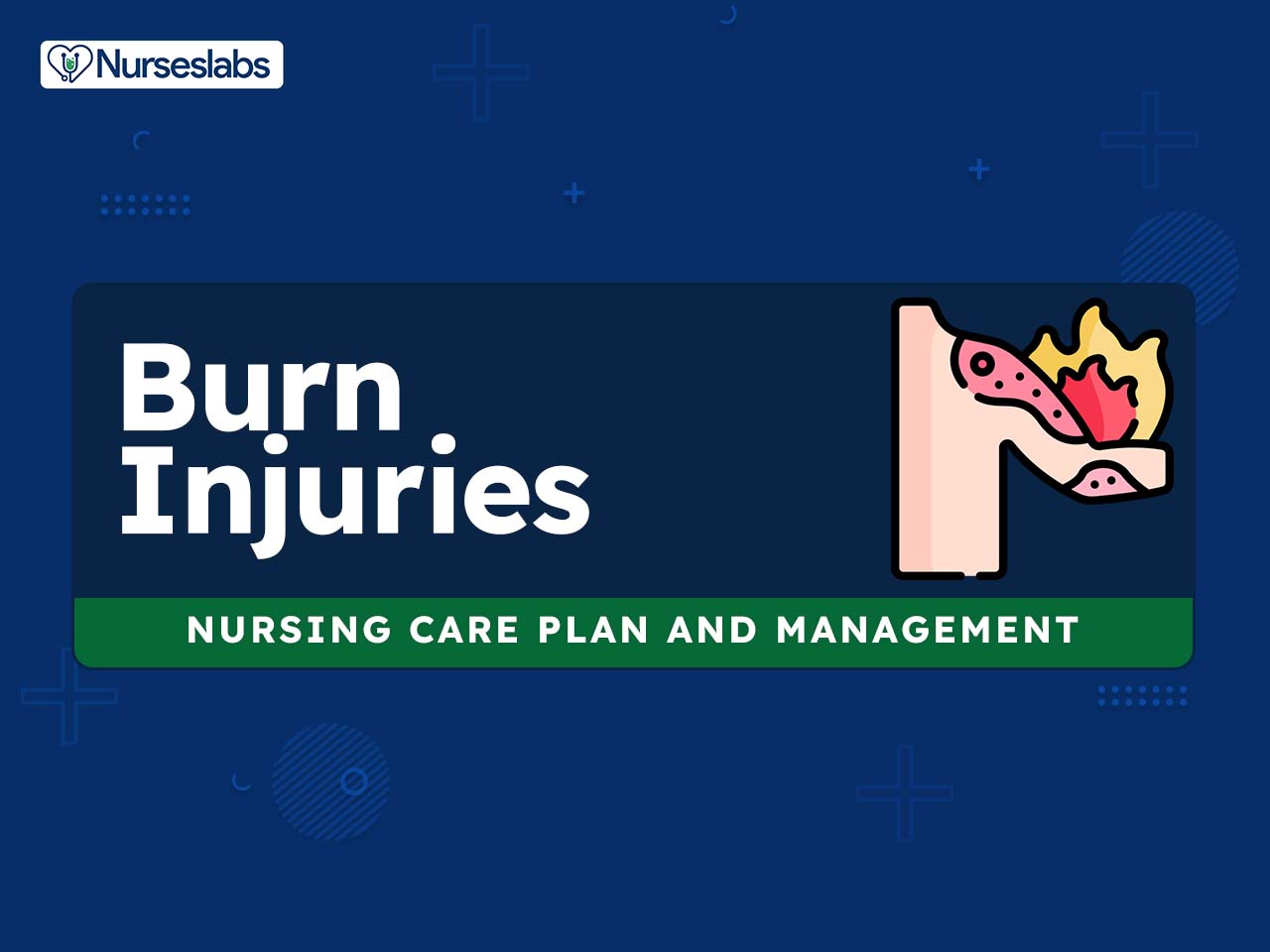

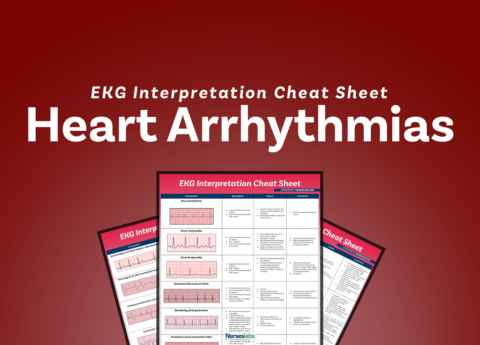

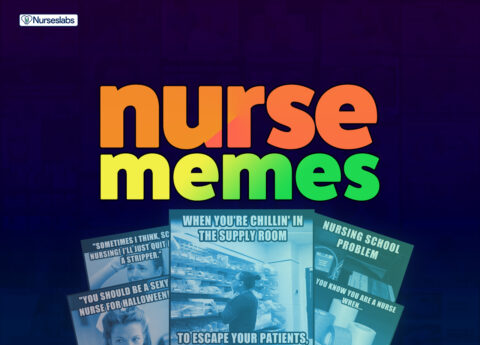
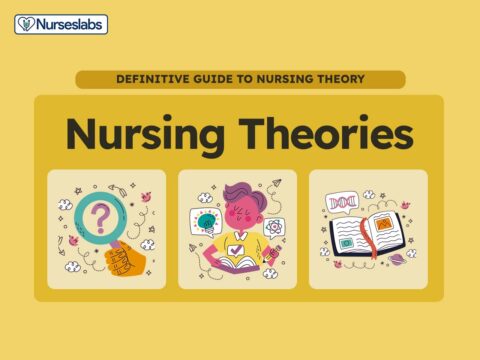



















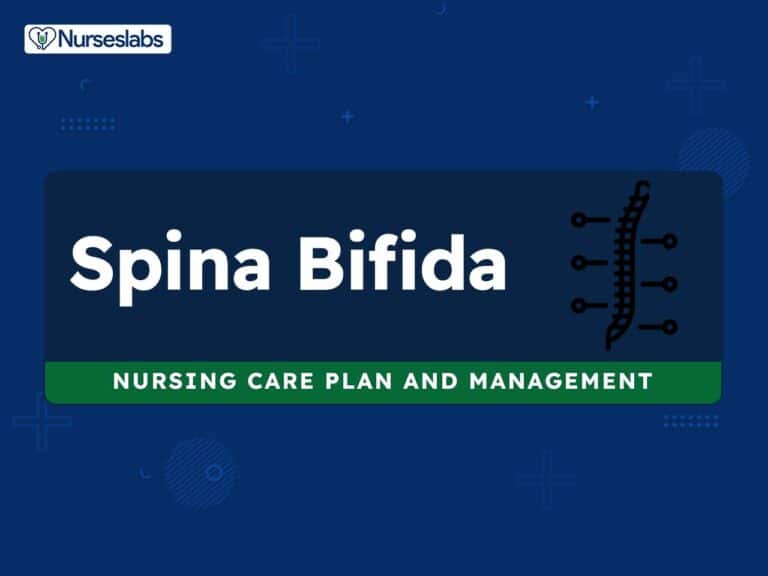



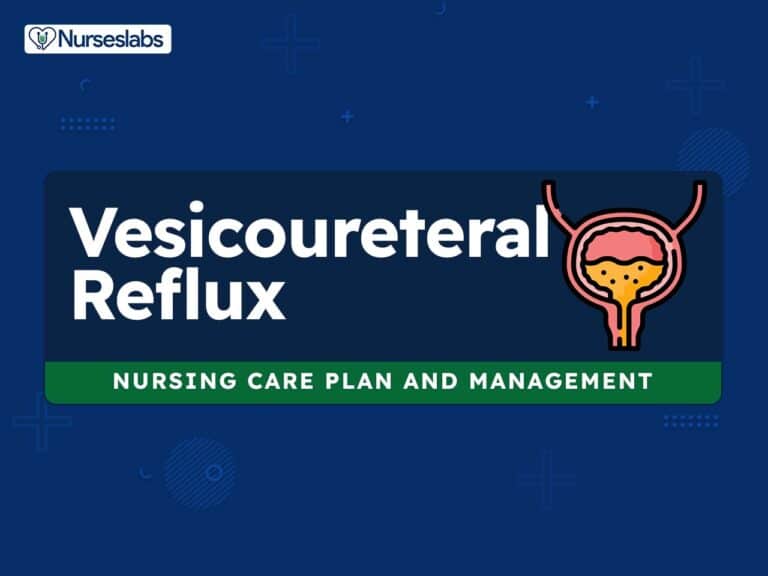
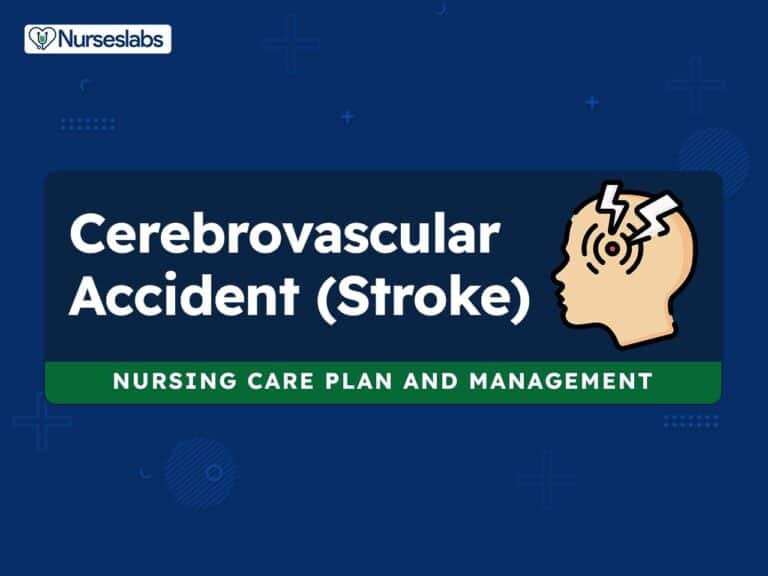


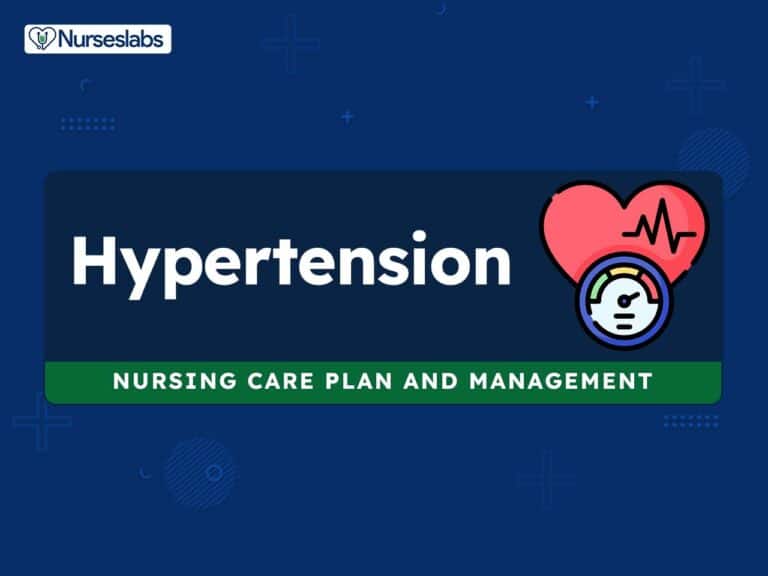
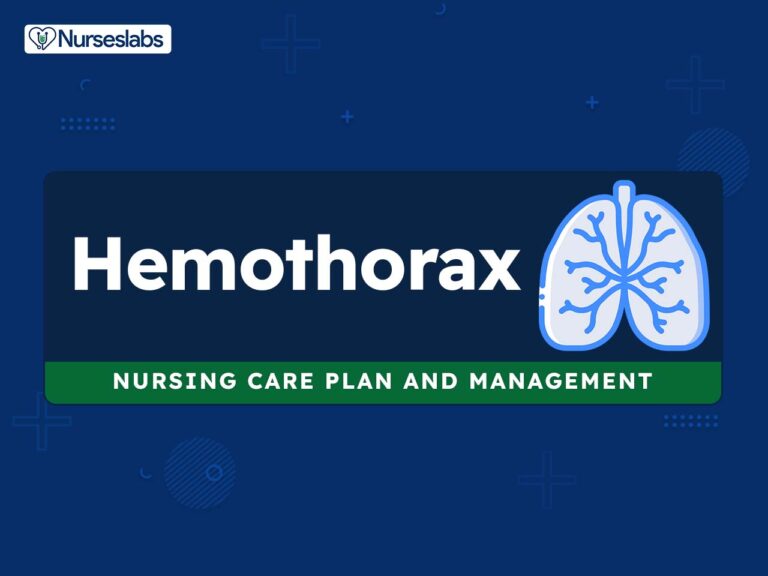
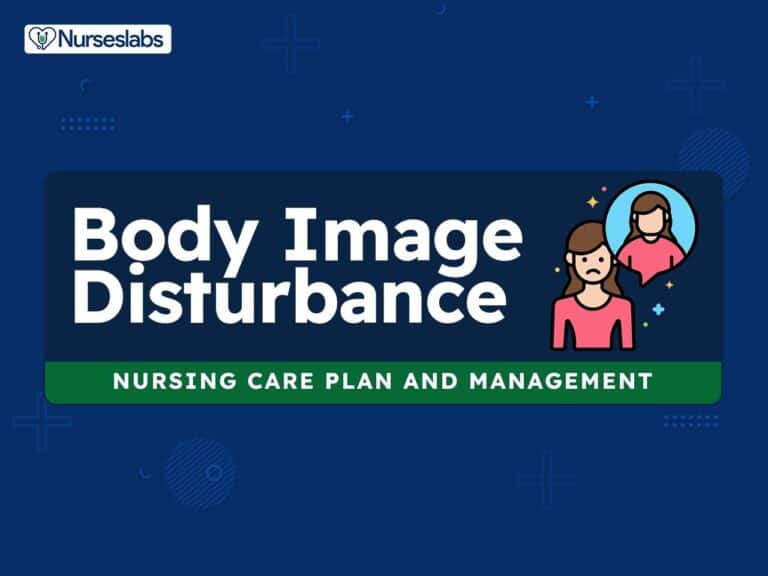
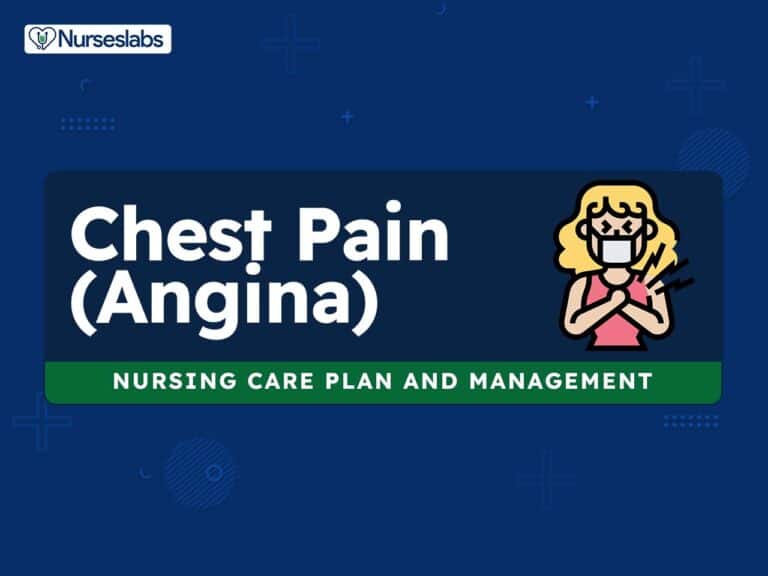
Leave a Comment